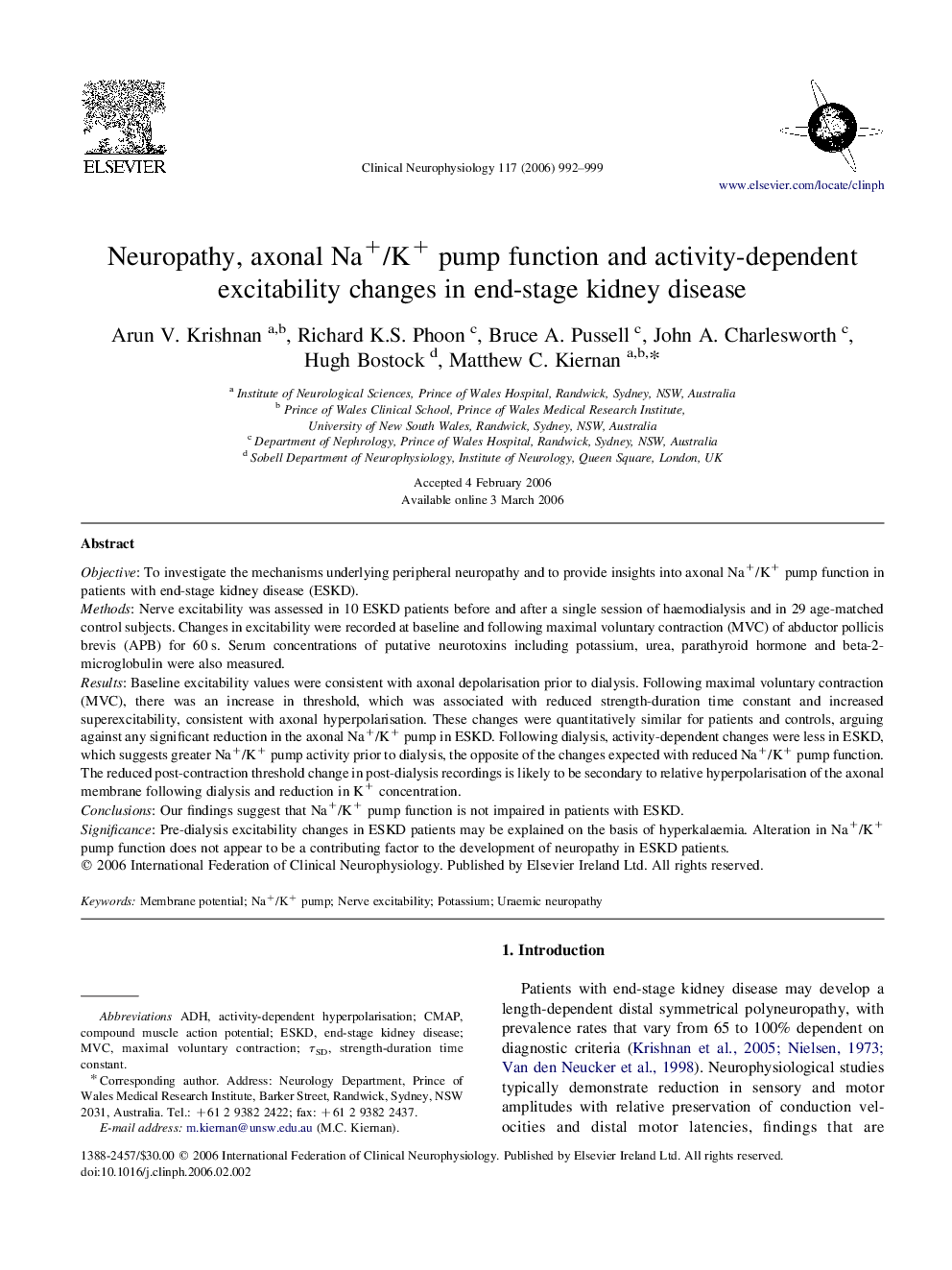| Article ID | Journal | Published Year | Pages | File Type |
|---|---|---|---|---|
| 3048631 | Clinical Neurophysiology | 2006 | 8 Pages |
ObjectiveTo investigate the mechanisms underlying peripheral neuropathy and to provide insights into axonal Na+/K+ pump function in patients with end-stage kidney disease (ESKD).MethodsNerve excitability was assessed in 10 ESKD patients before and after a single session of haemodialysis and in 29 age-matched control subjects. Changes in excitability were recorded at baseline and following maximal voluntary contraction (MVC) of abductor pollicis brevis (APB) for 60 s. Serum concentrations of putative neurotoxins including potassium, urea, parathyroid hormone and beta-2-microglobulin were also measured.ResultsBaseline excitability values were consistent with axonal depolarisation prior to dialysis. Following maximal voluntary contraction (MVC), there was an increase in threshold, which was associated with reduced strength-duration time constant and increased superexcitability, consistent with axonal hyperpolarisation. These changes were quantitatively similar for patients and controls, arguing against any significant reduction in the axonal Na+/K+ pump in ESKD. Following dialysis, activity-dependent changes were less in ESKD, which suggests greater Na+/K+ pump activity prior to dialysis, the opposite of the changes expected with reduced Na+/K+ pump function. The reduced post-contraction threshold change in post-dialysis recordings is likely to be secondary to relative hyperpolarisation of the axonal membrane following dialysis and reduction in K+ concentration.ConclusionsOur findings suggest that Na+/K+ pump function is not impaired in patients with ESKD.SignificancePre-dialysis excitability changes in ESKD patients may be explained on the basis of hyperkalaemia. Alteration in Na+/K+ pump function does not appear to be a contributing factor to the development of neuropathy in ESKD patients.
